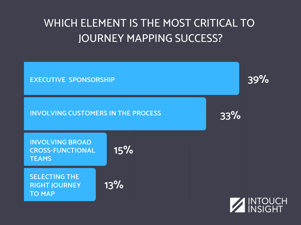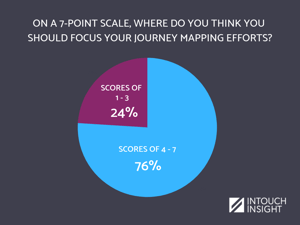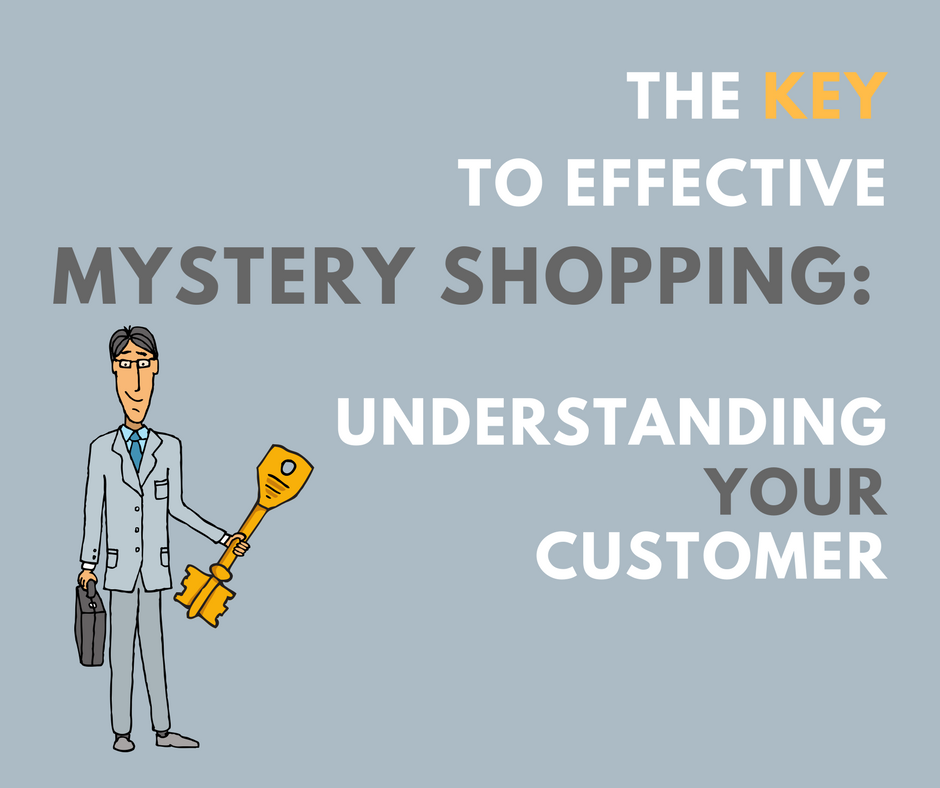The “What’s Next” of Journey Mapping
Guest Post by Jeannie Walters, CCXP Customer journey mapping can be a powerful tool to truly understand your customers, innovate around new ways to...
4 min read
Lindsay Sykes March 04, 2019

We recently hosted a webinar with special guest, Jim Tincher of Heart of the Customer, that focused on creating actionable customer journey maps. The webinar covered how to drive action from journey maps, the importance of involving the entire organization in the process, and how anyone can get started by focusing on the key moments that matter in the customer journey.
We also shared a couple of examples of companies who are effectively using journey map dashboards to measure and improve customer experience at different touchpoints.
Some key takeaways from the webinar included:
 During the webinar, we asked audience members to vote on the element they consider to be most critical to journey mapping success. In most cases, the audience said it was one of the four factors highlighted in the chart below, but the order of importance is varied. While only 15% of audience members believe the most important element is involving broad, cross-functional teams, Jim explained why this is actually the most critical element to success.
During the webinar, we asked audience members to vote on the element they consider to be most critical to journey mapping success. In most cases, the audience said it was one of the four factors highlighted in the chart below, but the order of importance is varied. While only 15% of audience members believe the most important element is involving broad, cross-functional teams, Jim explained why this is actually the most critical element to success.
 We also asked audience members think about where they would focus their efforts when increasing customer satisfaction. 76% of the audience agreed that focusing on customers who gave scores of 4-6 would yield the most value, while 24% of people would try to eliminate the low negatives (scores of 1-3). Jim explained why focusing on elevating the positives is nine times as valuable than trying to eliminate the negatives.
We also asked audience members think about where they would focus their efforts when increasing customer satisfaction. 76% of the audience agreed that focusing on customers who gave scores of 4-6 would yield the most value, while 24% of people would try to eliminate the low negatives (scores of 1-3). Jim explained why focusing on elevating the positives is nine times as valuable than trying to eliminate the negatives.
After the webinar, Jim engaged in a Q&A session with attendees, which sparked lots of great discussion about a variety of topics. We’ve summarized some of Jim’s responses below.
Q: How do you suggest folks start mapping their customers' journeys?
A: Failed journey mapping typically happens because people are focused on creating the map without taking the time to think through what they’re trying to accomplish. We start with five journey mapping questions, as we’ll outline in the book How Hard Is It to Be Your Customer: Using Journey Mapping to Drive Customer-Focused Change:
Depending on the current state of your experience, you may do best with an end-to-end map, or you may need to start with a specific sub-journey map. Use these five questions to help think through the approach.
Q: What do you say to people who think that journey mapping is not a stand alone service?
A: Journey mapping is primarily used as a standalone feature when the problem is known, but the solution isn’t. For example, if you know the problem requires an updated website, you may use a journey map along with a service design approach, but probably wouldn’t segregate the journey mapping from the design work. But where standalone journey mapping really shines is when you want to explore the different possibilities to solve a business problem, without starting with a specific solution.
Q: What is your view of the intersection between journey mapping and service design?
A: Journey mapping is an input to service design. I just started reading "This is Service Design Doing," and one of their points is that a lot of language, including service design and design thinking, really mean similar things, but are not largely defined. My take is that journey mapping is a service design tool.
Q: Do you always do service blueprinting when you have to drive action through journey maps?
A: Not always, although it’s a good activity. Service blueprinting is typically done for a sub-journey map. For example, if your fulfillment process is broken, you may want to use a service blueprint to drive changes. However, if you’re doing an end-to-end map of the entire customer journey, it’s a too high an abstraction to do a service blueprint.
Q: What is your opinion of combining a journey mapping effort with service blueprinting and just using one map?
A: There are actually a few questions in here.
Q: How do you determine the level of granularity (scope) needed in a customer journey? How do you choose where to start and where to end a journey?
A: You start with the business problem that has led to the business problem behind your journey mapping initiative – that should drive the granularity needed. We typically see one of three business problems:
Something is broken. Your survey scores may show frustration at a particular part of the journey, or you may have customers leaving over a specific area. For example, the YMCA observed a relationship between visits in the first month and overall retention, so focused their mapping on the first month.
You are doing something. For example, building a new website or changing your service model. In this situation, the journey reflects that area you are changing. A new website is a common example here.
You have new leadership. This leads to the broadest type of journey, typically an end-to-end journey map, whereas the other two are typically narrower maps.
The key is: Start with a business problem.
Q: How do you handle cross-channel journeys? Are there best practices in regards to staying within a single channel for the duration of a journey?
A: The channels covered are based on the business problem, but also based on what customers do. Rather than forcing your map to cover just one channel, let the customers lead you to what channels to focus on.
If your goal is (for example) to move more customers to self-service, then I’d create two maps – one focused on those who use self-service and one on those who don’t (you may want a third for those who switch channels). Look to see what separates the two. Is it the type of problem addressed, the type of customer, or something different? Then use this to find ways to encourage the “right” behavior. But understand that there are reasons that customers use the channels they do, and trying to force the behavior you want is unlikely to be successful unless you focus on the Desire component of the ADKAR change model.

Guest Post by Jeannie Walters, CCXP Customer journey mapping can be a powerful tool to truly understand your customers, innovate around new ways to...

Have you ever been in a situation where you ask a question only to receive an answer that isn’t what you were looking for? Maybe you didn’t ask the...

We recently hosted a customer experience webinar with special guest, Kerry Bodine. Kerry is the co-author of Outside In: The Power of Putting...